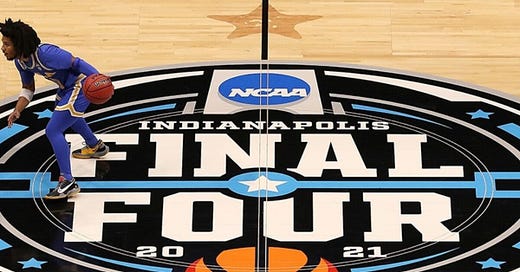Heartland: Made for This Moment: An Indiana Sports Corp Story
This intriguing documentary looks at the history and finest moments of the organization that made Indianapolis into a major sports town.
For Heartland Film Festival showtimes and tickets, click here.
Indiana had the country’s first sports corporation, founded in 1979, and it’s played a pivotal role in Indianapolis being recognized as a premiere destination for major events like the 2012 Super Bowl, the 10th Pan Am Games, Final Four basketball tournaments and too many other to count.
Some people snort at the Indiana Sports Corp, insisting the taxpayers’ money would be better spent somewhere else. But it’s hard to claim the Downtown Indy scene would be anything like it is today without some Hoosier leaders taking some big, risky swings back in the day.
That story is memorialized in the intriguing documentary, “Made for This Moment: An Indiana Sports Corp Story,” directed by Eric Maloney and made with the participation of many of Indianapolis’ movers and shakers.
The film focuses the first half on the founding and development of ISC, helping turn Indianapolis from a sleepy Midwestern town to a major sports and convention destination. The second half details perhaps the organization’s finest movement, putting on the entire 2021 NCAA March Madness tournament on short notice in the midst of COVID.
As some observers have said, the fate of college sports hung in the balance if the annual hoops event didn’t happen. The ISC, led by current president Ryan Vaughn, partnered with local businesses and institutions to put March Madness on without fans in the stands, a massive logistical challenge that involved 20-hour worksdays for weeks on end and literally tens of thousands of volunteers.
“We really had to build an entire city in a bubble,” says hoops legend Quinn Buckner.
I was fascinated by tales of the early years of the ISC, with Sandy Knapp serving as the first president. We also get to hear from many other key figures: former VP Milt Thompson, Indy Star sports journalist Bill Benner, Lily Endowment chair Jim Morris, Michael Browning, Jack Swarbrick, Phil Borst, Ted Boehm, Stephen Goldsmith, Pete Ward, Rick Fuson, Greg Ballard, Mel Raines, Allison Melangton, Joe Hogsett, Eric Holdcomb, Virginia Caine, Mark Emmert and probably a couple dozen others I’m leaving out.
Former Butler University Coach and current Boston Celtics President Brad Stevens turns up to offer his endorsement, as does CBS broadcasting legend Jim Nantz, who sings the praises of Indianapolis sporting events, saying nobody does it better.
What comes through in this documentary is the interconnectedness of the various institutions, businesses, politicians and civic-minded folks. People set aside party affiliation and competing rivalries to focus on the shared interests of the city and state. That led to the building of three major downtown sports venues all within easy walking distance of each other, the major hotels and convention center.
“It really wasn’t a sports strategy, it was a downtown strategy,” says Mark Miles, chairman of the 1987 Pan American Games — an event rivaling the Olympics in size and scope that really put the ISC on the map.
Among their biggest bets: building a NFL-size football stadium, the Hoosier (later RCA) Dome, years before they even had an inkling of getting a franchise. (We’ll leave aside, as the documentary does, the rather shady circumstances under which the Colts decamped from Baltimore.)
The Super Bowl was another huge event that led to the idea of an entire week of events for visitors, from live musical performances to zipline rides and art installments. It also brought about the Near Eastside Legacy Project, which poured dollars and business into a dilapidated part of Indianapolis.
Suddenly, other host cities realized that sporting events wasn’t just a way to make a few bucks and get some TV coverage, but rethink and reinvent how we live, work and play in a metropolitan center.
“Made for This Moment” steers away from any kind of controversy. Don’t expect a tell-all, investigative journalism approach to ISC — this is a self-congratulatory piece that focuses on successes and downplays any missteps.
Still, it’s a slickly produced, never less than engaging doc that shows how Hoosiers came together to build something entertaining, enduring and important.





